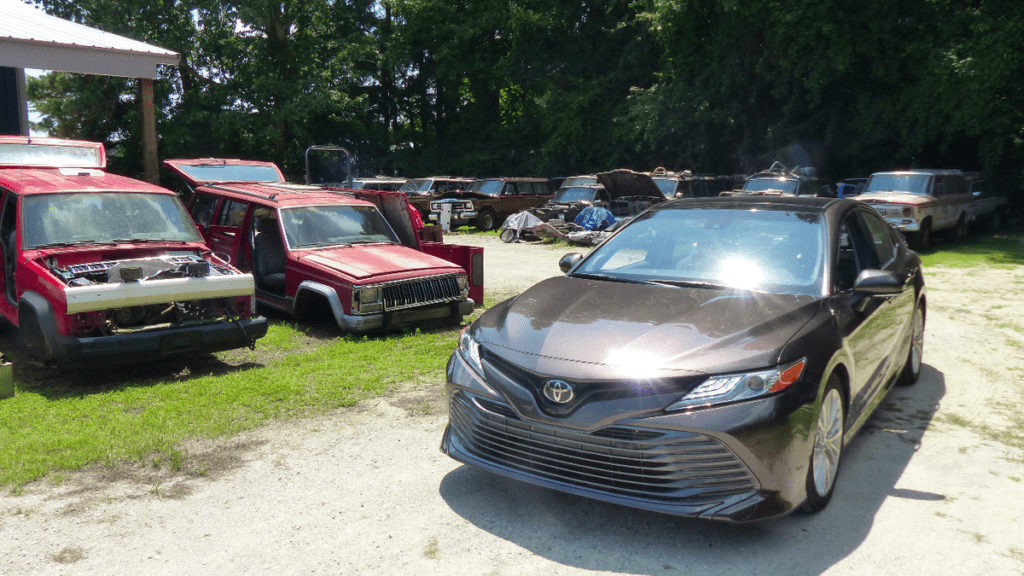This Is a Reminder That Your Car Payment Is Only a Part of Your Vehicle Costs

While there are signs that the car market is slowly improving in some segments, a lot of buyers are still feeling their budget is being stretched to score a quality vehicle. One of the biggest mistakes consumers can make is to only focus on the cost of the car and not the ancillary expenses that come with it.
Racing Tech | How Formula E’s New Front Powertrain Extends Battery Life on its Race Cars
According to a recent study, 58% of the participants said they could not afford an emergency vehicle repair that was $1000 or more and a further 64% of respondents said they are putting off scheduled maintenance. Putting aside some of the potential flaws to this data gathering regarding a relatively small sample size, it’s safe to say that we all know a few people who are guilty of neglecting their rides. And if we are honest, many of us have probably pushed our luck a few times as well. I know that I drove around for weeks in my 2015 GTI with the car telling me “oil change soon” and didn’t get it serviced until the notification went to “oil change now.” While that doesn’t seem too extreme, you don’t want to roll the dice too many times with an out-of-warranty German car.
Too often when buyers are looking at what a vehicle is going to cost, their primary focus is the total price or the monthly payment, but if they are not careful this narrow view could end up costing the buyer way more than they had anticipated. Consumers should be taking a big-picture approach to their cars and take into account the following areas.
Maintenance
As I mentioned above a lot of folks are not doing the normal maintenance needed to keep their cars running and often put things off that could end up becoming more expensive repairs later. Procrastinating on car care is often because it’s inconvenient, or frankly folks just don’t like spending the money. Even regular maintenance like replacing tires can hit the wallet hard, but the safety risk of driving around on unsafe rubber is not worth it.
It’s critical to have a budget in mind for repairs before you buy your next ride, what that budget should look like depends on what kind of car you are getting and how old it is.
For buyers that are averse to regular and expensive maintenance, it may be wise to spend a little more on a newer car that is known for reliability and perhaps some warranty. For example, a used Toyota at $20,000 is likely going to cost less in the long run than a $15,000 BMW. This is where research is key when deciding on your next vehicle, some cars within certain model years are known for specific issues like transmission failures, electronic gremlins, and so on. A little bit of online digging can save you a lot of money down the road.
Fuel/Energy
Everyone knows they need to fill their car up with gas or electricity, but the frequency and total cost of these items are often underestimated. If you are a driver with a long daily commute the fuel cost difference between a car that gets 25 mpg and 40 mpg is going to be substantial over the course of a year. For buyers that are pivoting to electric cars, there is this misconception that those cars are “free” to “re-fuel.” Naturally, if you have a home that runs on solar power and charge your car, your cost is fairly minimal. But electricity does cost money and while you won’t be paying for dino juice you could see a big jump in your electric bill. Of course, on long road trips, you will be swiping your credit card at any number of charging stations along the way. For many buyers, the benefits of going electric outweigh gas cars, but the cost of that energy should still be factored into the purchase.
On the flip side, with so many EVs, and PHEVs now being disqualified from the federal tax credit making their net cost much higher than fuel-efficient ICE models, the potential fuel savings may not make up for the price premium.
Insurance
There are so many variables that factor into a driver’s insurance cost such as the type of vehicle, location, and the driver’s age just to name a few. Buyers may be surprised to find out that similar vehicles can have very different insurance premiums depending on how the carrier assess the risk for that particular car.
Just recently there were some affordable models from Hyundai and Kia that became easy targets for car thieves. This caused some insurance companies to increase the premiums or refuse coverage altogether for those cars. Therefore it’s wise to shop your insurance rates if you have a few different cars in mind.
Of course, these are just the major expenditures when it comes to owning a car. Folks living in cities may have to factor in monthly parking costs or someone using a vehicle for work could need to buffer for equipment and extra wear. The key is to give yourself a cushion beyond the monthly car note or the total cost of the vehicle.
Tom McParland is a contributing writer for Jalopnik and runs AutomatchConsulting.com. He takes the hassle out of buying or leasing a car. Got a car buying question? Send it to Tom@AutomatchConsulting.com



